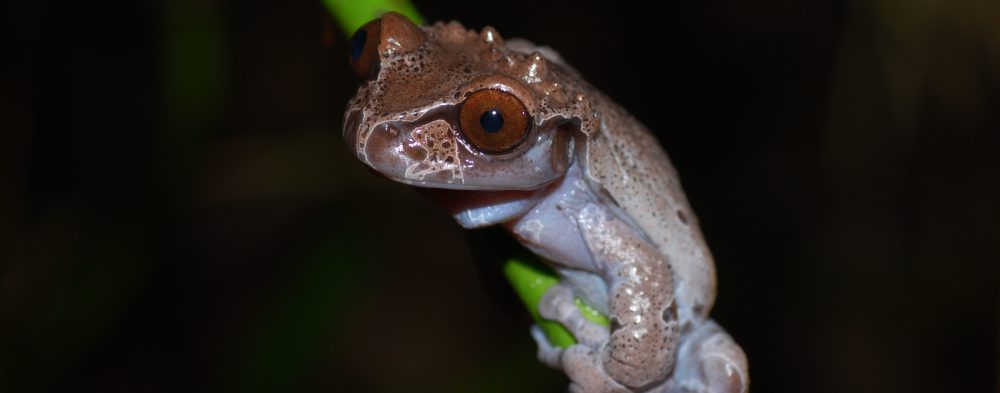Below is a brief description of my major research projects
The Physiological Costs, Consequences, and Bases of Phenotypic Plasticity
When prey animals are exposed to predators, they often respond by hiding or reducing their foraging activity. However, substantial research has also shown that predators often caused increased metabolic rates in prey animals. How do these things intersect with the fact that many species develop defensive phenotypes when exposed to predators? Various research projects in collaboration with Eric Moody and Ivan Gomez-Mestre are exploring how trophic status and elemental physiology change when tadpoles are exposed to predators. Similarly, I am interested in understanding how stress hormones interact with predator identity to influence phenotype development. Lots of research has shown that exposing tadpoles to corticosterone induces a defensive phenotype. However, this explanation doesn’t work for species where there are multiple, opposing defensive phenotypes for different predators (like D. ebraccatus!).
The Development and Evolvability of Phenotypic Plasticity
Many organisms demonstrate phenotypic plasticity in response to environmental variation during development. In addition to having remarkable plasticity in reproduction, tadpoles of D. ebraccatus have plasticity in coloration and morphology in response to aquatic predators. Specifically, tadpoles develop skinny clear tails in response to chemical cues of fish predators whereas the same tadpoles can develop large red tails in response to chemical cues of aquatic insect predators such as dragonfly nymphs. However, there is substantial genetic variation in the baseline phenotypes of different families (i.e., different genotypes) as well as the ability of those families to respond to cues of predators. In collaboration with Jeanne Robertson (Cal State Northridge) I have estimated heritability and coefficients of variation for phenotypic plasticity (currently in review in Evolution). Beyond this, D. ebraccatus provides a tremendous opportunity to study the genomic and transcriptomic bases of plastic phenotypes, which we are currently investigating with my lab colony.
The Evolution of Terrestrial Reproduction via Phenotypic Plasticity
Terrestrial forms of reproduction have evolved from aquatic origins many times in animals, including frogs. I study treefrogs in the genus Dendropsophus in order to understand the genetic, behavioral and developmental changes that have occurred with the shift to laying eggs on land. This work has primarily been conducted at the Smithsonian Tropical Research Institute in Panama but has also been conducted at (much!) more remote sites in Central and South America. I conduct field behavioral experiments with adults, manipulative lab experiments to examine embryo development, and Sanger and NextGen sequencing to estimate relatedness between populations and species. In particular, the species Dendropsophus ebraccatus has flexible reproduction, facultatively switching between aquatic and terrestrial egg-laying in response to the shade above their breeding pond. I have recently established a captive colony of D. ebraccatus at Vassar College, which will allow artificial selection on more aquatic or terrestrial breeding females.
Carryover Effects of Phenotypic Plasticity
I have long been interested in how plastic responses to predators or other environmental cues may have lasting effects later in life. I have primarily studied the red-eyed treefrog (Agalychnis callidryas) which is a model system for studying plastic responses of embryos to risks (see work by Karen Warkentin). My work in this system has shown how seemingly small changes in hatching timing of embryos can change tadpole viability and timing of metamorphosis months later. Furthermore, I have shown that the actual transition of metamorphs leaving the water is flexible and that A. callidryas can plastically adjust multiple aspects of this transition in response to predators both in and out of the water.
Induced Hatching Responses to Aquatic Pathogens
Embryos worldwide are susceptible to attack from pathogens. In the temperate zone, amphibian egg masses are often colonized by a pathogen called a water mold (Family: Saprolegniaceae). Water mold can attack eggs of species such as wood frogs, American toads and spring peepers, killing some eggs but causing others to hatch prematurely. Previously, I have explored how embryo-pathogen interactions are modified by common aquatic pollutants such as road salts, pesticides and herbicides. Currently, using the Vassar Farm and Ecological Preserve as a study site, I am studying how effects of water mold are altered by the presence of common freshwater snails (Physa sp.).
